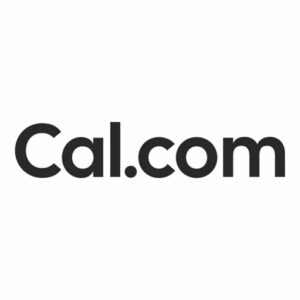Scheduling meetings shouldn’t feel like a full-time job. Back-and-forth emails trying to find a time that works for everyone? That’s the kind of productivity drain that tools like Calendly were built to eliminate. But while Calendly has become the go-to name in automated scheduling, it’s not the only player in the game, and for many businesses, it’s not even the best fit.
Whether you’re looking for deeper customization, more robust team features, open-source control, or simply a better price point, there’s a growing ecosystem of Calendly alternatives designed to meet specific needs. Some excel at AI-driven scheduling, others cater to service-based businesses with payment processing and client management, and a few offer enterprise-grade flexibility without the enterprise price tag.
In this guide, we’ll break down what makes a scheduling tool worth your time, explore the top Calendly alternatives across different use cases, and help you figure out which one aligns with your business goals. Let’s find the right tool to streamline your calendar, without compromise.
Top Calendly Alternatives For December 2025
Cal.com

Cal.com is a versatile and open-source scheduling platform designed to streamline the process of booking meetings and events. It offers a user-friendly interface, customizable scheduling workflows, and seamless integrations with major tools like Google Workspace, Slack, and WordPress. Whether you’re an individual looking for a simple scheduling solution or a business needing scalable, enterprise-ready features, Cal.com provides flexible options to meet diverse needs. With its free plan for individuals and developer-friendly APIs, it serves as a cost-effective alternative to traditional scheduling tools, while also providing a self-hosting option for those who require more control over data and security.
Pros:
-
User-Friendly Design
Cal.com boasts a clean and intuitive interface that is easy to navigate, even for those who aren’t tech-savvy. The platform simplifies the scheduling process by allowing users to easily create and share event links, making it an excellent choice for both personal and professional use. -
Open-Source Flexibility
One of Cal.com’s standout features is its open-source foundation. This not only allows users to self-host the platform for greater control over data and security but also fosters a community-driven approach to product development, enabling faster updates and customizations. -
Comprehensive Integrations
With native integrations for platforms like Google Workspace, Slack, and Squarespace, Cal.com ensures that users can effortlessly connect their scheduling process to their existing workflows. It also supports integrations with Zapier, making it easy to automate various tasks and enhance productivity. -
Scalable Pricing Plans
Cal.com offers a free plan with unlimited bookings for individuals, making it a cost-effective choice for freelancers or small businesses. Paid plans, such as the Teams plan, scale according to user needs, ensuring that businesses of all sizes can find a suitable pricing tier. -
Advanced Scheduling Features
The platform supports advanced scheduling options such as round-robin assignment, multiple event types, and custom availability settings, which streamline the booking process and eliminate scheduling conflicts. -
Native Video Conferencing
Cal.com includes built-in video conferencing capabilities, offering features like automatic transcription, meeting recording, and customizable post-meeting redirects. This feature ensures a seamless meeting experience, without the need for third-party video tools.
Cons:
-
Limited Customization for Booking Forms
Some users have noted that Cal.com’s booking forms include mandatory fields (such as name and email) that cannot be easily removed. While these fields are essential for many businesses, the lack of flexibility can be a limitation for those who need more control over their forms. -
UI Issues with Calendar Invites
Users have reported that the calendar invites generated by Cal.com, particularly when used with Microsoft 365, lack customization options and appear basic or unprofessional. This can affect the experience for recipients of invites, especially in B2B environments where presentation matters. -
Support Delays
While Cal.com generally offers responsive customer support, some users have reported longer-than-expected wait times for assistance. This can be a concern for businesses that rely on timely problem resolution, especially when recommending the platform to clients. -
Complexity for New Users
Although Cal.com offers powerful features, some users have found the platform’s advanced settings and customizations difficult to navigate without a technical background. This can be challenging for those looking for a simple, plug-and-play solution.
In summary, Cal.com is a feature-rich, flexible scheduling platform that offers both ease of use and the power to scale for growing teams. Its open-source nature, combined with robust integrations and advanced scheduling mechanics, makes it an excellent choice for a wide range of users. However, potential users should be aware of its limitations in customization and occasional support delays, especially if they are seeking a highly polished, enterprise-level experience.
ChilliPiper

Chili Piper is a powerful inbound conversion and scheduling solution designed to streamline meeting booking and lead routing for sales and marketing teams. The platform enables faster response times and reduces friction in the scheduling process by offering automated meeting booking, CRM integrations, and customization options. Targeted at high-growth B2B organizations, Chili Piper is particularly beneficial for teams using Salesforce, offering advanced tools for lead management, conversion tracking, and appointment scheduling.
Pros:
-
Efficient Lead Routing
Chili Piper’s primary strength lies in its advanced lead routing features, allowing teams to automatically distribute inbound leads to the right sales representatives based on predefined rules. This reduces response time and boosts lead conversion rates. -
Seamless CRM Integrations
The platform integrates smoothly with Salesforce, HubSpot, and other CRM systems, ensuring that leads and meeting information are automatically synced with your sales pipeline. This integration eliminates manual data entry and keeps sales teams focused on closing deals. -
Customizable Scheduling Pages
Users can customize scheduling pages to match their branding and provide a professional and personalized experience for clients. This makes it easier to maintain consistency across your outreach efforts while creating a polished, brand-aligned scheduling environment. -
Speed-to-Lead
With Chili Piper, teams can drastically cut down the time between lead capture and meeting booking. Its automated scheduling and instant booking capabilities ensure that leads are contacted and converted quickly, minimizing the chances of losing potential clients.
Cons:
-
Higher Price Point
While Chili Piper offers advanced features, its pricing may be prohibitive for smaller teams or companies with limited budgets. At USD 22.50 per month, it is significantly more expensive than simpler alternatives like Calendly, which may offer adequate functionality for less complex scheduling needs. -
Learning Curve
Some users find the platform requires a bit of a learning curve, particularly when training new employees or trying to customize advanced features. The interface can feel a little overwhelming for those who are used to more straightforward scheduling tools. -
Integration Challenges
Although Chili Piper integrates well with major CRM tools like Salesforce, some users have reported issues with other integrations, such as Zoom, and experience delays or UI glitches when syncing calendars or setting meeting times. -
Limited for Smaller Teams
While ideal for enterprise-level sales and marketing teams, smaller businesses or those with less sophisticated CRM systems may find Chili Piper overbuilt for their needs. The platform’s full potential is unlocked when paired with enterprise CRM solutions, making it less useful for teams without these systems in place.
Zoho Bookings

Zoho Bookings is an AI-driven appointment scheduling software that simplifies the process of booking and managing appointments. Integrated seamlessly with the Zoho ecosystem, it offers businesses a streamlined, user-friendly platform to automate scheduling, reduce administrative workload, and improve customer satisfaction. Zoho Bookings provides essential features such as customizable booking pages, automated reminders, and real-time calendar sync, making it an ideal choice for businesses looking to save time and boost operational efficiency. With a strong emphasis on automation, it helps businesses reduce no-shows and improve resource allocation.
Pros:
-
User-Friendly Interface: Zoho Bookings is highly intuitive, requiring little to no training for users to get started. The platform offers a clean and organized interface that makes appointment scheduling easy and efficient.
-
Seamless Zoho Ecosystem Integration: One of Zoho Bookings’ standout features is its deep integration with other Zoho products, such as Zoho CRM and Zoho Calendar. This ensures a unified experience, where data flows smoothly across platforms, minimizing the risk of errors and double bookings.
-
Customizable Booking Pages: Users can personalize their booking pages to reflect their branding, including adding logos, color schemes, and custom fields. This feature ensures a professional, consistent look across all customer touchpoints.
-
Automated Reminders and Notifications: Zoho Bookings helps reduce no-shows with automated email and SMS reminders. Businesses can set up multiple reminders at different intervals before an appointment, ensuring clients stay informed and punctual.
-
Cost-Effective: Particularly appealing for businesses using Zoho One, Zoho Bookings comes at no additional cost, offering excellent value for money. Its affordability combined with powerful features makes it a compelling option for small to medium-sized businesses.
Cons:
-
Syncing Issues with Third-Party Apps: Some users have reported difficulties with calendar syncing, particularly with third-party applications. The integration sometimes lacks full bidirectional sync, leading to inconsistencies in scheduling.
-
Limited Customization for Themes: While Zoho Bookings offers basic customization options, some users have expressed the need for more advanced design features, particularly in terms of themes and color schemes.
-
Mobile App Limitations: While the mobile app is functional, it doesn’t offer the same level of capability as the desktop version. Users may experience limited functionality on mobile devices, which can be inconvenient for those who need to manage appointments on the go.
-
Occasional Customer Support Delays: Although Zoho offers responsive support, some users have experienced delays in resolving issues. Complex problems may take longer than expected to address, potentially frustrating users in urgent situations.
-
Missing Features for Advanced Users: Certain advanced features, such as the ability to accept or decline appointments before they appear on the calendar, are not yet available. Additionally, some users feel that the platform lacks robust reporting and analytics features.
Zoho Bookings presents a solid solution for businesses looking to simplify their scheduling process while benefiting from the broader Zoho ecosystem. While it excels in ease of use, automation, and integration, users may face occasional syncing issues and desire more customization options. Overall, Zoho Bookings offers significant value for businesses, particularly those already using Zoho’s suite of applications.
What Is Calendly and Why Consider Alternatives?
Calendly is an online scheduling platform that automates appointment booking by letting people see your availability and select a time slot that works for them, no email ping-pong required. It integrates with popular calendar apps like Google Calendar, Outlook, and iCloud, syncs your availability in real time, and sends automated reminders to reduce no-shows.
For many individuals and small teams, Calendly hits the sweet spot: it’s user-friendly, reliable, and gets the job done. But as businesses grow or their scheduling needs become more nuanced, limitations start to surface.
Some common reasons teams look beyond Calendly include:
- Limited customization: Branding and booking page flexibility can feel restrictive, especially for agencies or client-facing businesses.
- Pricing structure: As team size grows, costs can add up quickly, particularly if you need advanced features locked behind higher tiers.
- Feature gaps: Things like resource scheduling, multi-tier booking flows, or granular control over booking rules may not be available or intuitive.
- Lack of open-source options: Businesses that prioritize data privacy, self-hosting, or deep technical customization won’t find what they need in a closed platform.
- Integration limitations: While Calendly integrates with many tools, some businesses need tighter workflows with CRMs, payment processors, or niche apps.
In short, Calendly works well for straightforward scheduling, but it’s not a one-size-fits-all solution. Depending on your industry, team structure, and technical requirements, there’s likely an alternative that fits your workflow better, and might even save you money in the process.
What to Look for in a Calendly Alternative
Before diving into specific tools, it helps to know what separates a solid scheduling platform from one that’ll just create new headaches. Here are the key criteria to evaluate:
Customization Options
Your booking page is often a first impression. Can you customize it to match your brand, colors, logos, domain? Beyond aesthetics, look for flexibility in booking rules: buffer times between meetings, minimum notice periods, and the ability to create different event types with unique settings.
Scheduling Flexibility
Does the tool support the complexity your business requires? This includes:
- Group bookings: Multiple attendees, panel interviews, or team meetings.
- Round-robin scheduling: Distribute appointments evenly across team members.
- Resource assignment: Book rooms, equipment, or other shared resources alongside people.
- Multi-step booking flows: Collect information, offer add-ons, or route bookings based on criteria.
Integrations
A scheduling tool is only as strong as the ecosystem it plugs into. Prioritize platforms that integrate seamlessly with:
- Calendar providers (Google, Outlook, iCloud)
- Video conferencing tools (Zoom, Microsoft Teams, Google Meet)
- CRM and sales platforms (Salesforce, HubSpot)
- Payment processors (Stripe, PayPal)
- Marketing and automation tools (Zapier, webhooks, APIs)
Pricing and Scalability
Consider not just the upfront cost, but how pricing scales as your team grows. Some tools charge per user, others per booking or feature tier. Free plans can be great for testing, but check what features are gated and whether the jump to paid tiers makes sense for your budget.
AI-Powered Features
Some modern tools leverage AI to suggest optimal meeting times, automate follow-ups, or analyze scheduling patterns. If efficiency and data-driven insights matter to you, this can be a game-changer.
Open-Source Capabilities
For teams that need full control, whether for privacy, compliance, or customization, open-source alternatives offer the ability to self-host, modify code, and avoid vendor lock-in. This is particularly appealing to developers, agencies, and enterprises with strict data governance.
The right tool balances these factors based on your specific needs. A solo consultant’s priorities will look very different from a sales team’s or a healthcare practice’s.
Top Calendly Alternatives for Different Needs
Not all scheduling tools are created equal. Here’s a breakdown of the best options based on what matters most to your workflow.
Best for Open-Source Flexibility
Cal.com stands out as the leading open-source scheduling platform. It offers the core functionality you’d expect, calendar syncing, booking pages, integrations, but with the added benefit of full code access. That means you can self-host, customize the interface, build custom integrations via API, and maintain complete control over your data.
Cal.com is privacy-friendly and supports advanced features like team scheduling, webhooks, and workflow automation. It’s a strong choice for developers, agencies, and businesses that want to tailor their scheduling tool to exact specifications without relying on a proprietary platform. The free self-hosted version is robust, and paid plans add white-labeling and premium support.
Best for AI-Powered Scheduling
ScheduleOnce (now part of OnceHub) brings AI into the mix with conversational scheduling. Instead of just displaying a calendar grid, it can guide users through intelligent booking flows, suggest optimal times based on patterns, and handle complex multi-party scheduling scenarios.
It integrates deeply with CRMs and marketing automation platforms, making it a favorite for sales and customer success teams. The AI-driven approach reduces friction, especially when coordinating across time zones or managing high-volume booking requests.
Best for Sales Teams
Sprintful is built with sales workflows in mind. It supports round-robin distribution to ensure leads are spread evenly across your team, custom notifications to keep everyone in the loop, and team scheduling for multi-stakeholder meetings.
What sets Sprintful apart is its focus on conversion optimization, features like dynamic booking links, pre-qualification questions, and CRM sync ensure that sales reps spend less time coordinating and more time closing. It’s a practical pick for B2B teams juggling demo requests, discovery calls, and prospect follow-ups.
Best for Simplified Scheduling
YouCanBookMe strips away complexity in favor of speed and simplicity. Setup is fast, the interface is clean, and it includes thoughtful features like password-protected booking pages and the ability to manually accept or reject bookings before they’re confirmed.
It’s ideal for freelancers, coaches, and small businesses that need reliable scheduling without a steep learning curve or overwhelming feature bloat. The pricing is straightforward, and it integrates with major calendar and video tools.
Best for Service-Based Businesses
Acuity Scheduling (a Squarespace company) is tailored for businesses that need more than just appointment booking, it handles packages, memberships, tips, and payment processing all in one place. You can issue vouchers, manage class schedules, and even collect intake forms before appointments.
This makes it a natural fit for wellness professionals, salons, fitness studios, consultants, and anyone who sells time-based services. The client management features are solid, and the interface feels polished and professional.
Best Free Calendly Alternatives
If budget is a constraint, or you just want to test the waters before committing, there are several free alternatives that punch above their weight.
SuperSaaS offers a surprisingly generous free tier with unlimited users, making it a standout for small teams or community organizations. It’s highly customizable, supports payments, and includes form builders for collecting attendee information. The interface isn’t the flashiest, but the functionality is robust and flexible enough for a wide range of use cases.
Doodle is best known for meeting polls, ideal for coordinating group availability when you’re wrangling multiple schedules. The free version covers basic polling and scheduling, though advanced features require a paid plan. It’s lightweight and works well for informal team coordination or event planning.
ScheduleOnce also offers a free plan, though it’s more limited compared to its paid tiers. You’ll get basic scheduling and integrations, which can be enough for solo users or small teams just getting started. It’s a good way to test the platform’s AI-powered features before upgrading.
Each of these tools proves you don’t need a premium subscription to handle professional scheduling, though as your needs grow, you’ll likely want to explore paid options for deeper functionality and support.
How to Choose the Right Scheduling Tool for Your Business
With so many options, how do you actually decide? Start by mapping your scheduling workflow and identifying pain points.
Assess your business needs. Are you scheduling solo, or do you need team coordination? Do clients need to pay at booking? Is branding important? Make a list of must-have features versus nice-to-haves.
Consider scalability. If you’re a growing team, check how pricing and features scale. Some tools charge per user, others per event type or booking volume. Make sure the pricing model aligns with your growth trajectory.
Evaluate integrations. Your scheduling tool should fit into your existing tech stack, not force you to change it. Check for native integrations with your calendar, CRM, video conferencing, and any niche tools your business relies on. API access and webhook support add flexibility for custom workflows.
Review cost structure and support. Look beyond the sticker price, what features are included at each tier? Is customer support responsive? Are there hidden costs for add-ons or overages?
Test before committing. Most scheduling tools offer free trials or freemium plans. Take advantage of these to test the user experience, both from your side and your clients’. Set up a few test bookings, try the integrations, and see how intuitive the interface feels in practice.
Eventually, the best scheduling tool is the one that reduces friction in your workflow, feels intuitive to your team and clients, and scales with your business without very costly. Don’t be afraid to switch if your current tool isn’t pulling its weight, your time is too valuable to waste on clunky software.
Conclusion
Calendly may be the household name in scheduling, but it’s far from the only option, and depending on your needs, it might not even be the best one. Whether you’re drawn to the open-source freedom of Cal.com, the sales-focused workflows of Sprintful, the service business features of Acuity Scheduling, or the simplicity of YouCanBookMe, there’s a tool designed specifically for how you work.
The right scheduling platform should feel invisible, handling the logistics so you can focus on the actual work. It should integrate smoothly with your existing tools, scale as your business grows, and give your clients a seamless booking experience that reflects your professionalism.
Take the time to evaluate what matters most: customization, team features, integrations, pricing, or technical control. Test a few options, involve your team in the decision, and choose the platform that makes scheduling feel effortless rather than exhausting. Your calendar, and your sanity, will thank you.
Key Takeaways
- While Calendly is popular for automated scheduling, the best Calendly alternatives offer features like deeper customization, AI-powered scheduling, open-source control, and better pricing for growing teams.
- Cal.com leads as an open-source option with self-hosting capabilities, while tools like Acuity Scheduling excel for service-based businesses that need payment processing and client management.
- Sales teams benefit most from alternatives like Sprintful that offer round-robin distribution and CRM integration to optimize lead conversion.
- Free Calendly alternatives like SuperSaaS and Doodle provide robust scheduling features without subscription costs, ideal for small teams and budget-conscious users.
- When choosing the best Calendly alternative for your business, prioritize tools that integrate seamlessly with your existing tech stack and scale affordably as your team grows.
Frequently Asked Questions
What are the best Calendly alternatives for small businesses?
Top Calendly alternatives for small businesses include Cal.com for open-source flexibility, YouCanBookMe for simplified scheduling, and Acuity Scheduling for service-based businesses needing payment processing. SuperSaaS offers a generous free tier with unlimited users, making it budget-friendly for growing teams.
Why do businesses switch from Calendly to other scheduling tools?
Common reasons include limited customization options, escalating costs as teams grow, lack of advanced features like resource scheduling or multi-tier booking flows, integration limitations with specific tools, and absence of open-source or self-hosting options for data privacy and control.
Is there a free Calendly alternative that works well?
Yes, SuperSaaS offers a robust free tier with unlimited users and customization options. Doodle provides free meeting polls for group coordination, and ScheduleOnce has a limited free plan suitable for solo users testing AI-powered scheduling features before upgrading.
What is Cal.com and how does it compare to Calendly?
Cal.com is an open-source scheduling platform offering calendar syncing, booking pages, and integrations like Calendly, but with full code access for self-hosting and customization. It’s ideal for developers and businesses prioritizing data privacy, technical control, and avoiding vendor lock-in.
Which scheduling tool is best for sales teams?
Sprintful is purpose-built for sales workflows, featuring round-robin lead distribution, pre-qualification questions, dynamic booking links, and CRM synchronization. These features help sales teams optimize conversions and spend more time closing deals rather than coordinating meetings.
Can scheduling software integrate with payment processors?
Yes, many Calendly alternatives like Acuity Scheduling support payment integration with Stripe and PayPal, allowing service-based businesses to collect payments at booking. This is particularly useful for consultants, wellness professionals, and businesses selling time-based services or packages.

Alessio Rigoli is the founder of AGR Technology and got his start working in the IT space originally in Education and then in the private sector helping businesses in various industries. Alessio maintains the blog and is interested in a number of different topics emerging and current such as Digital marketing, Software development, Cryptocurrency/Blockchain, Cyber security, Linux and more.
Alessio Rigoli, AGR Technology
![logo-new-23[1] logo-new-23[1]](https://agrtech.com.au/wp-content/uploads/elementor/thumbs/logo-new-231-qad2sqbr9f0wlvza81xod18hkirbk9apc0elfhpco4.png)

